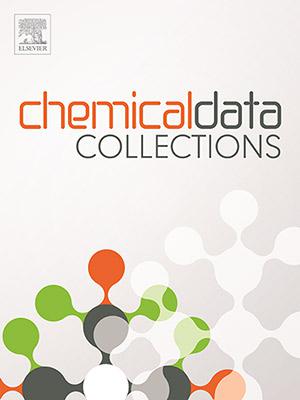Hydrophobicity assessment of substituted imidazoles: Experimental log P values retrieved by high performance liquid chromatography
IF 2.7
Q2 Chemistry
引用次数: 0
Abstract
Imidazole derivatives are a wide group of organic compounds with applications in chemistry, medicine, biology, and material science. The physicochemical properties of these compounds have been reported in databases and literature; however, data of the important hydrophobicity descriptor log P are limited. The water solubility of imidazoles used as ligands is critical in the design of materials for ambient and electronic applications. In this study, the related descriptor log kw,exper was obtained from reverse-phase high performance liquid chromatography (RP-HPLC) for a variety of alkyl and phenyl imidazoles and is supplied with the data article. Comparison with the calculated values of log Ppred and log kw,pred from different sources is presented. Experimental values present a good linear relationship with log Ppred, and differences between isomers are clear in cases where software yields the same value.

取代咪唑的疏水性评估:用高效液相色谱法检索实验对数P值
咪唑衍生物是一类广泛应用于化学、医学、生物学和材料科学的有机化合物。这些化合物的理化性质已在数据库和文献中报道;然而,重要的疏水性描述符logp的数据有限。作为配体的咪唑的水溶性在环境和电子应用的材料设计中是至关重要的。在本研究中,通过反相高效液相色谱法(RP-HPLC)获得了各种烷基和苯基咪唑的相关描述符log kw,exp,并提供了数据文章。并与不同来源的测井功率和测井功率的计算值进行了比较。实验值与log Ppred呈良好的线性关系,在软件产生相同值的情况下,异构体之间的差异是明显的。
本文章由计算机程序翻译,如有差异,请以英文原文为准。
求助全文
约1分钟内获得全文
求助全文
来源期刊

Chemical Data Collections
Chemistry-Chemistry (all)
CiteScore
6.10
自引率
0.00%
发文量
169
审稿时长
24 days
期刊介绍:
Chemical Data Collections (CDC) provides a publication outlet for the increasing need to make research material and data easy to share and re-use. Publication of research data with CDC will allow scientists to: -Make their data easy to find and access -Benefit from the fast publication process -Contribute to proper data citation and attribution -Publish their intermediate and null/negative results -Receive recognition for the work that does not fit traditional article format. The research data will be published as ''data articles'' that support fast and easy submission and quick peer-review processes. Data articles introduced by CDC are short self-contained publications about research materials and data. They must provide the scientific context of the described work and contain the following elements: a title, list of authors (plus affiliations), abstract, keywords, graphical abstract, metadata table, main text and at least three references. The journal welcomes submissions focusing on (but not limited to) the following categories of research output: spectral data, syntheses, crystallographic data, computational simulations, molecular dynamics and models, physicochemical data, etc.
 求助内容:
求助内容: 应助结果提醒方式:
应助结果提醒方式:


